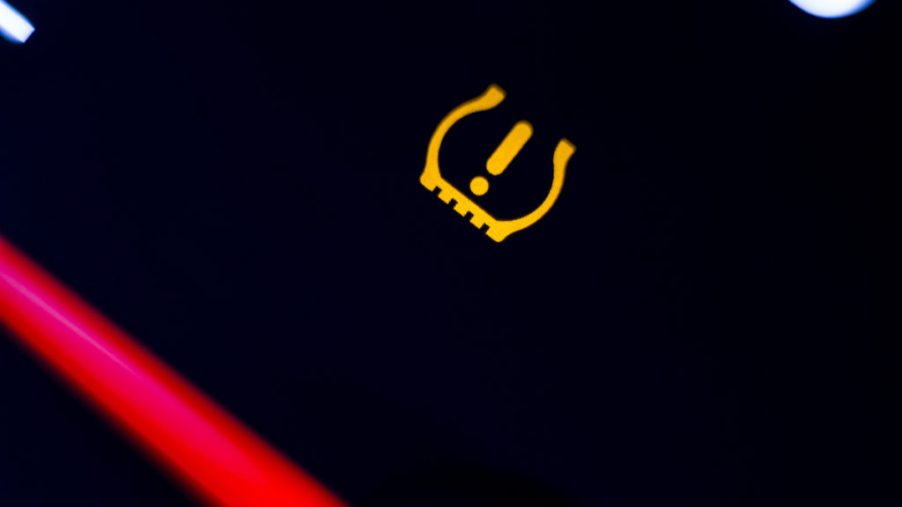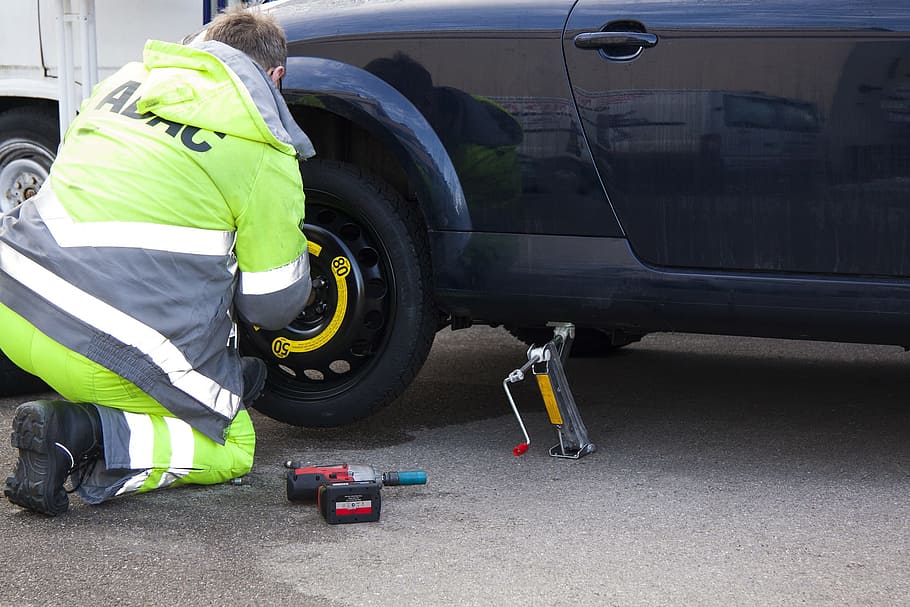
Ignoring Your TPMS Light Could Be a Dangerous Mistake
Avoid car trouble this summer by paying attention to warning lights, like your TPMS light. Vacations, daily commutes, and errands run more smoothly when your vehicle is working in tip-top shape. See why the TPMS light shouldn’t be ignored.
What is the TPMS light?

The TPMS light refers to your Tire Pressure Monitoring System (TPMS). A TPMS sensor is an electronic component that monitors the pressure of each tire.
If the light illuminates, you’ll see a symbol shaped like a horseshoe with an exclamation mark inside appear on your guage cluster behind the steering wheel.
If you see this symbol, it means that one or more of your tires has low air pressure. But it can also indicate if your tires are over-inflated. Either way, It’s best to pull over if you see the TPMS light to check your tires with a tire pressure guage.
You might be able to find out why your tire is losing air and if you need to add air. Most cars require a PSI between 30 to 35. You can determine how much PSI your tires need by looking at a chart near the VIN on the inside of the driver’s side door. Or, by looking directly at the tire itself.
Can you drive with the TPMS symbol on?
Technically, you can still drive if the TPMS light turns on, but it’s not the best idea. It’s best to pull over safely as soon as you can, but it might be OK to travel a few miles first. Be sure to have enough room to pull over safely.
Check on your tires to determine the cause of pressure issues. If your tire is flat, is losing air rapidly, or has been punctured by something like a nail, it will need to be changed to go any farther.
The issue could also be minor. Extreme changes in hot and cold weather can impact your tire pressure. The air in your tires could be low on a cold morning, but as it warms up, the air will expand. This could make the tire pressure light turn off.
If you don’t have a pressure gauge, use your thumb to see if a tire is underinflated. Underinflated tires are soft to the touch, while over-inflated tires feel incredibly stiff. Use your palm to determine if you’re putting enough air in.
Some vehicles will display the pressure of each tire on the digital guage cluster. But it’s best to check each tire manually.
The lowest tire PSI that’s acceptable for driving is about 20 PSI. But not for very long, or you could risk damaging the tires and other vehicle components.
What happens if you drive with underinflated tires?

Ignoring the TPMS light to drive with underinflated tires can cause them to wear out faster. Ties with less pressure are squishier, and more of the rubber is exposed to wear and tear, making the edges degrade. It could lead to a premature blowout. Plus, new tires are expensive!
You may also experience less grip, making it more dangerous to drive in slippery conditions caused by rain, snow, or other conditions. Less traction makes it more difficult to control your vehicle.
Floppy tires take more energy to turn, so underinflated tires can burn more fuel. This creates more extra costs.
Driving with overinflated tires increases the risk of a blowout, creates a loss of traction, and leads to a harsher ride. It’s really dangerous, as hitting an average pothole could make the tire explode. Driving with 38 PSI is fine, but experts recommend we don’t go any higher. The exception would be a specialized tired that calls for a higher PSI.
So, the TMPS light could be the normal result of changing temperatures, or it could mean that one or more of your tires is rapidly losing air. Don’t ignore this light, and check on your tires as soon as safely possible if it lights up on your dash.





